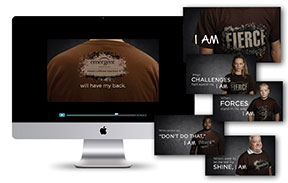Discussions about “going beyond the pill” and the shift toward service have dominated many a life-sciences conference recently. For many, this supposed paradigm shift amounts to lip service. But for others it represents an opportunity for transformation.
PulseCX rebranded from Roska Healthcare Advertising in May 2014 with the aim of capitalizing on that transition and to act as a shepherd for drug and device makers hoping to join. “The industry is shifting to customer experience marketing rather than the benefit-feature blanket approach,” says Jay Bolling, CEO of PulseCX. “We believe there needs to be a transformational change in marketing communications. One year from launch, we’re truly starting to see it build.
“The conversation is moving from ‘what can we create for you’ and ‘let’s talk about stuff and developing stuff ‘ to ‘let’s explore your market, your brand, your relationships with stakeholders and customers’—that will dictate what we do,” he adds.
Bolling says the agency’s nine-step roadmap to experiential marketing—PulsePoints360—continues to gain traction. PulseCX brought in new work from Actavis, Merck’s investigational HCV therapy grazoprevir/elbasvir, Inspire Medical Systems for a sleep apnea device, Neodyne for a scar-prevention device and Silvergate Pharmaceuticals for its pediatric hypertension drug Epaned.
Bolling says by the end of 2015 its roster may include seven to 10 new accounts, with the agency forecasting 25% growth year over year. The agency’s head count grew from 44 to 52 from 2013 to 2014. He says the agency’s staff will likely expand by 15% to 20% over this year, but there are no planned restructurings or new offices in the works. The agency replaced its creative lead, Tina Fascetti—who left for Guidemark Health—with David Grillo as executive creative director.
David Zaritsky, president of PulseCX, attributes the success of its methodology to the way in which it helps brands stand out—in a market where differentiation has proved increasingly difficult. “The typical strategy goes something like, ‘Here’s my brand, here’s what it does, hopefully it’s better than the other product.’ There’s so much noise around healthcare stakeholders now that there’s just not a lot of difference between brands and franchises.
“Experiential marketing focuses on everything over and around the feature benefit,” he continues. “We’ve always called ourselves storytellers. We map all the characters [stakeholders] and then examine each and say, ‘What is the experience each one is looking for? What role can the brand play?’ ”
Chief innovation officer Kurt Mueller agrees. “In years past it was all about efficacy,” he explains. “Efficacy above all else wins. The marketplace wasn’t as necessarily crowded. Blockbusters came along fairly often. You just don’t see that as much anymore. It’s not just the feature benefit of the product anymore. It’s about the relationship and the journey that happens.”
The agency’s leaders admit, however, that this approach isn’t for everyone. “Not every brand or franchise is ready for this kind of transformation,” Zaritsky notes.
Bolling adds that since its conception, the process has been an iterative one, “We’re finding things that work, and things that don’t work well. Because some companies are so siloed, with sales organization built up by protective sales management, you don’t find integration between sales and marketing, and it’s hard to move that ship,” he says. “That’s part of the reason we’ve been finding a lot of clients in mid-size pharma.”
From the July 01, 2015 Issue of MM+M - Medical Marketing and Media







